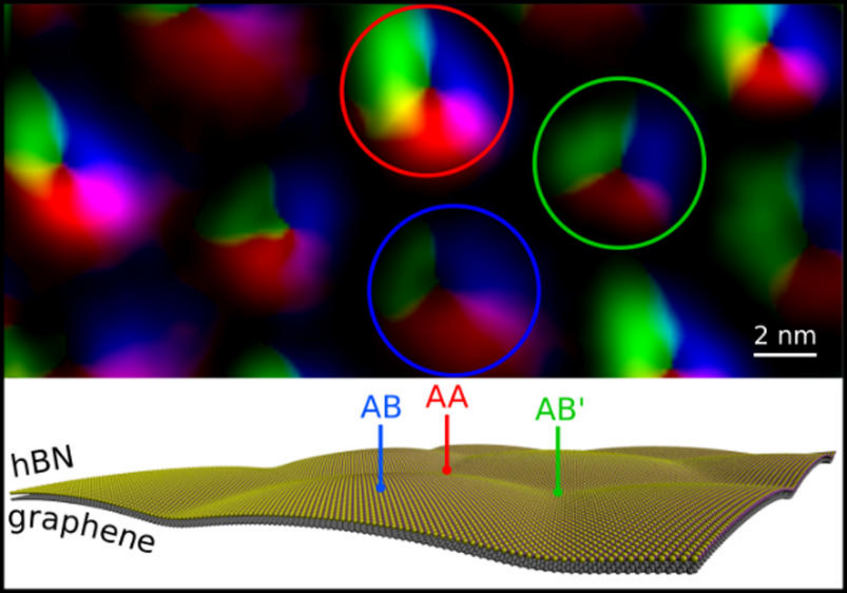Research Team 1 - Van der Waals heterostructures
Team members
- C. Dellago, C. Franchini, J. Kotakoski and DCAFM fellows.
Dissertation Projects

Corrugations in a graphene-hBN heterostructure revealed through electron scattering [1].
The three interrelated dissertation projects in this research area will focus on studying defects in transition metal dichalcogenide and graphene heterostructures using experimental probes and computer simulations. These 2D systems have great potential due to their interesting electronic, optical, mechanical and thermal properties [2, 3], which are strongly affected by defects. In the project of J. Kotakoski various TMD heterostructures will be created, manipulated and imaged in a transmission electron microscope. The structure and dynamics of these defects will be modeled computationally in the project of C. Dellago based on new machine learning potentials to be developed for these materials. In the complementary computational project of C. Franchini the coupling between defects structures and spin degrees of freedom will be investigated with quantum mechanical methods.
[1] Argentero, G. et al., Unraveling the 3D Atomic Structure of a Suspended Graphene/hBN van der Waals Heterostructure. Nano Lett. 17, 1409–1416 (2017). DOI: 10.1021/acs.nanolett.6b04360
[2] Wickramaratne, D., Zahid, F. & Lake, R. K., Electronic and thermoelectric properties of few-layer transition metal dichalcogenides. The Journal of Chemical Physics 140, 124710 (2014). DOI: 10.1063/1.4869142.
[3] Fang, H. et al., High-performance single layered wse2 p-fets with chemically doped contacts. Nano Letters 12, 3788–3792 (2012). DOI: 10.1021/nl301702r.
